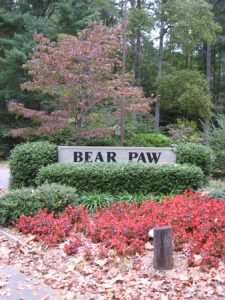If you’re a confirmed North Carolina history buff, downtown Murphy, NC features several noteworthy historical sites, most of them just a stone’s throw from the town’s center square.
Cherokee County Courthouse
Let’s say you came downtown for some coffee and pastries from The Daily Grind; or maybe you just finished a tasty lunch at Shoebootie’s. To walk off those calories, and satisfy your appetite for history, stroll up Peachtree Street to the Cherokee County Courthouse. You can’t miss it – just look for the huge marble building on the corner, next to Smoky Mountain Shooters Supply.
This Courthouse was built entirely of blue marble from – you guessed it – the nearby Marble community. The current Courthouse opened for business in 1927, after a fire destroyed the supposedly fireproof brick courthouse the year before. If you enjoy tracking down National Register of Historic Places landmarks, the Cherokee County Courthouse has a spot on that coveted list.
Cherokee County Historical Museum
Just steps from the Courthouse, step into the Cherokee County Historical Museum. Inside this brick building, kids will enjoy shiny minerals and quartz crystals, plus colorful rubies and amethysts. They might also imagine using the early settlers’ tools to accomplish everyday household and farm chores.
Of course, the Cherokee Indians have been longtime residents here, on a huge expanse of farmland and forests called the Cherokee Nation. To honor their culture, the Museum showcases over 2,000 Cherokee Indian artifacts. Besides typical household items, you’ll see plenty of pottery, axes, pipes, game stones, and arrowheads.
As a side note, nearby Fort Butler served as a collection point for Cherokee Indians made to march on the “Trail of Tears” to Oklahoma. During 1837, over 3,000 Cherokees from North Carolina and Georgia passed through the fort before their long journey west. Look for the memorial monument on nearby Fort Butler Street.
Harshaw Chapel and Cemetery
Next, take a jaunt to Central and Church Streets, an easy hike in good walking shoes. Here, you’ll find historic Harshaw Chapel and Cemetery, both occupying spots on the National Register of Historic Places. Well-known Murphy resident Joshua Harshaw dedicated this brick chapel to the Methodist Episcopal Church in 1869, although its adjacent cemetery was in operation before that.
The Harshaw Chapel was actively used for about 60 years, but deteriorated after the First United Methodist Church was built to accommodate the area’s growing Methodist congregation. In 1965, the Daughters of the American Revolution (Archibald D. Murphey chapter) acquired the chapel, and they’ve maintained it since then. On certain occasions, you’ll find a special Methodist service or community event there. Now, this modest little chapel holds the title of the oldest church building in Cherokee County.
Murphy Public Library (Nantahala Public Library)
If you’re a genealogy fan, check out the Murphy, NC Public Library on Blumenthal Street (near the Courthouse on a side street). Many genealogists sing the praises of our Genealogy Room, containing some of the best resources in western North Carolina (and maybe even the state). While digging through the files, you just might discover a long-lost relative or colorful ancestor.
The Poltrock Team – REMAX Mountain Properties – Murphy NC – www.MyMurphy.com – Call us Toll Free at 1-866-Murphy-NC or 1-866-687-7496 – Murphy’s #1 Real Estate Team



 It is quite an amazing area that leaves fond memories in the minds of children and adults. It is surprisingly common to have a middle-aged person come who spent their summers as a kid in Bear Paw and want to purchase a property so they can continue to enjoy and prolong those great memories that have captivated them for years.
It is quite an amazing area that leaves fond memories in the minds of children and adults. It is surprisingly common to have a middle-aged person come who spent their summers as a kid in Bear Paw and want to purchase a property so they can continue to enjoy and prolong those great memories that have captivated them for years. roads available were winding mountain roads, unsurfaced and impassable during wet weather. Consideration was given to building a rail spur to the dam site. However, after the job was completed the spur would be abandoned and a good highway would have to be constructed as a permanent part of the development. It was decided to locate the job railhead at Turtletown, Tennessee, and to build a highway from there to the job site. Today the road is TN Highway 123 to NC Highway 294 to Hiwassee Dam Road.
roads available were winding mountain roads, unsurfaced and impassable during wet weather. Consideration was given to building a rail spur to the dam site. However, after the job was completed the spur would be abandoned and a good highway would have to be constructed as a permanent part of the development. It was decided to locate the job railhead at Turtletown, Tennessee, and to build a highway from there to the job site. Today the road is TN Highway 123 to NC Highway 294 to Hiwassee Dam Road.


